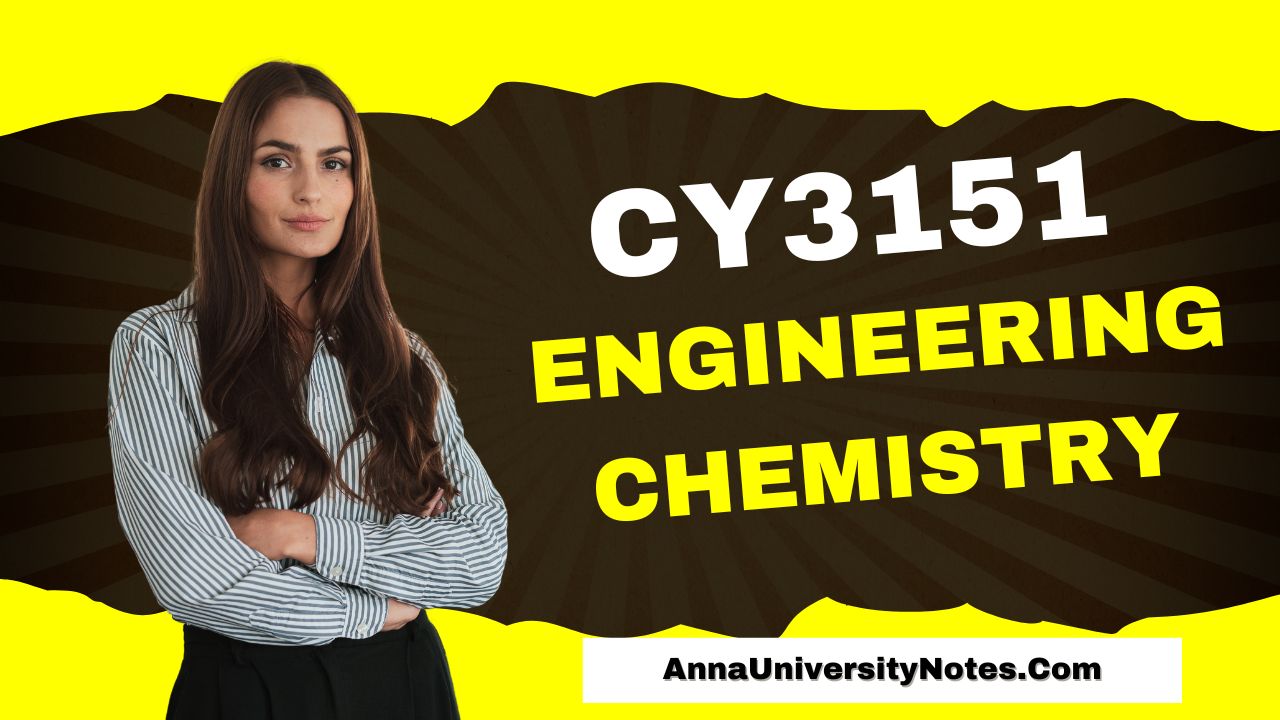CY3151 Engineering Chemistry Question Papers
Download CY3151 Engineering Chemistry Syllabus & Anna University CY3151 Engineering Chemistry Question Papers Collection. Anna University Question Papers Collection, All the materials are listed below for the students to make use of it and get good marks with our study materials.
CY3151 Engineering Chemistry Syllabus
UNIT I WATER AND ITS TREATMENT
Water: Sources and impurities, Water quality parameters: Definition and significance of-colour, odour, turbidity, pH, hardness, alkalinity, TDS, COD and BOD, flouride and arsenic. Municipal water treatment: primary treatment and disinfection (UV, Ozonation, break-point chlorination). Desalination of brackish water: Reverse Osmosis. Boiler troubles: Scale and sludge, Boiler corrosion, Caustic embrittlement, Priming &foaming. Treatment of boiler feed water: Internal treatment (phosphate, colloidal, sodium aluminate and calgon conditioning) and External treatment – Ion exchange demineralisation and zeolite process.
UNIT II NANOCHEMISTRY
Basics: Distinction between molecules, nanomaterials and bulk materials; Size-dependent properties (optical, electrical, mechanical and magnetic); Types of nanomaterials: Definition, properties and uses of – nanoparticle, nanocluster, nanorod, nanowire and nanotube. Preparation of nanomaterials: sol-gel, solvothermal, laser ablation, chemical vapour deposition, electrochemical deposition and electro spinning. Applications of nanomaterials in medicine, agriculture, energy, electronics and catalysis.
UNIT III PHASE RULE AND COMPOSITES
Phase rule: Introduction, definition of terms with examples. One component system – water system; Reduced phase rule; Construction of a simple eutectic phase diagram – Thermal analysis; Two component system: lead-silver system – Pattinson process.
Composites: Introduction: Definition & Need for composites; Constitution: Matrix materials (Polymer matrix, metal matrix and ceramic matrix) and Reinforcement (fiber, particulates, flakes and whiskers). Properties and applications of: Metal matrix composites (MMC), Ceramic matrix composites and Polymer matrix composites. Hybrid composites – definition and examples.
UNIT IV FUELS AND COMBUSTION
Fuels: Introduction: Classification of fuels; Coal and coke: Analysis of coal (proximate and ultimate), Carbonization, Manufacture of metallurgical coke (Otto Hoffmann method). Petroleum and Diesel: Manufacture of synthetic petrol (Bergius process), Knocking – octane number, diesel oil – cetane number; Power alcohol and biodiesel.
Combustion of fuels: Introduction: Calorific value – higher and lower calorific values, Theoretical calculation of calorific value; Ignition temperature: spontaneous ignition temperature, Explosive range; Flue gas analysis – ORSAT Method. CO2 emission and carbon foot print.
UNIT V ENERGY SOURCES AND STORAGE DEVICES
Stability of nucleus: mass defect (problems), binding energy; Nuclear energy: light water nuclear power plant, breeder reactor. Solar energy conversion: Principle, working and applications of solar cells; Recent developments in solar cell materials. Wind energy; Geothermal energy; Batteries: Types of batteries, Primary battery – dry cell, Secondary battery – lead acid battery and lithium-ion-battery; Electric vehicles-working principles; Fuel cells: H2-O2 fuel cell, microbial fuel cell; Supercapacitors: Storage principle, types and examples.
